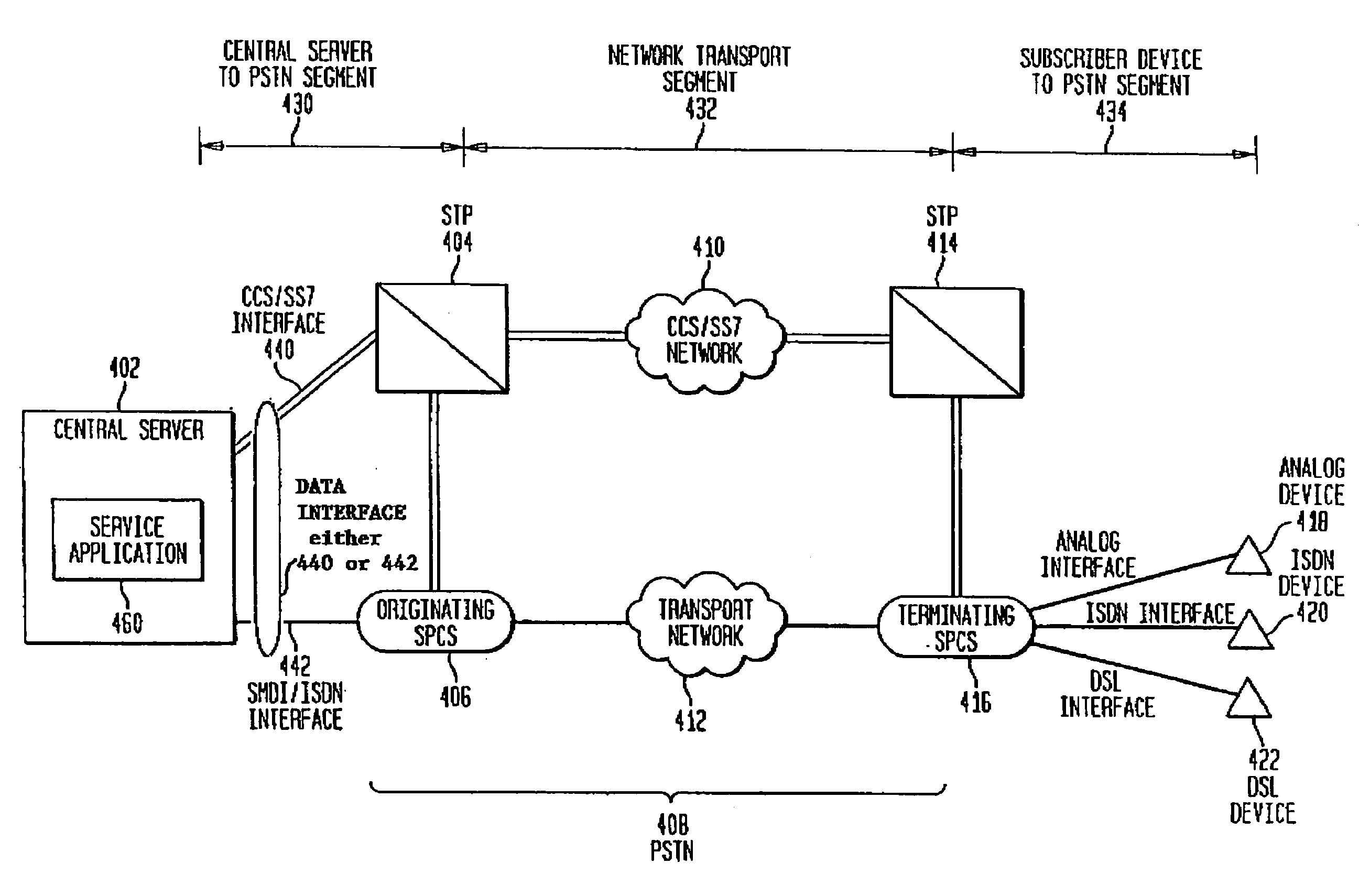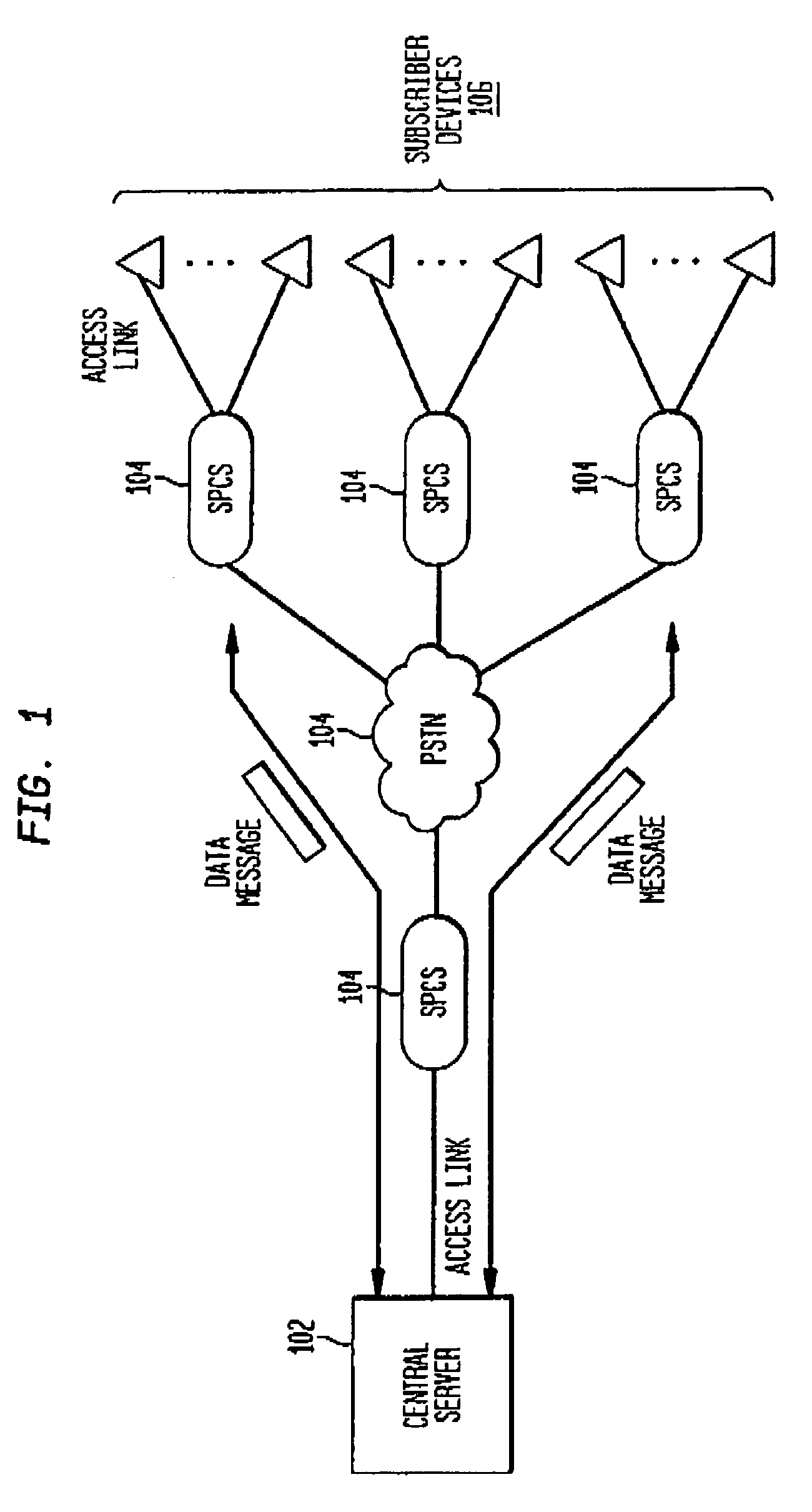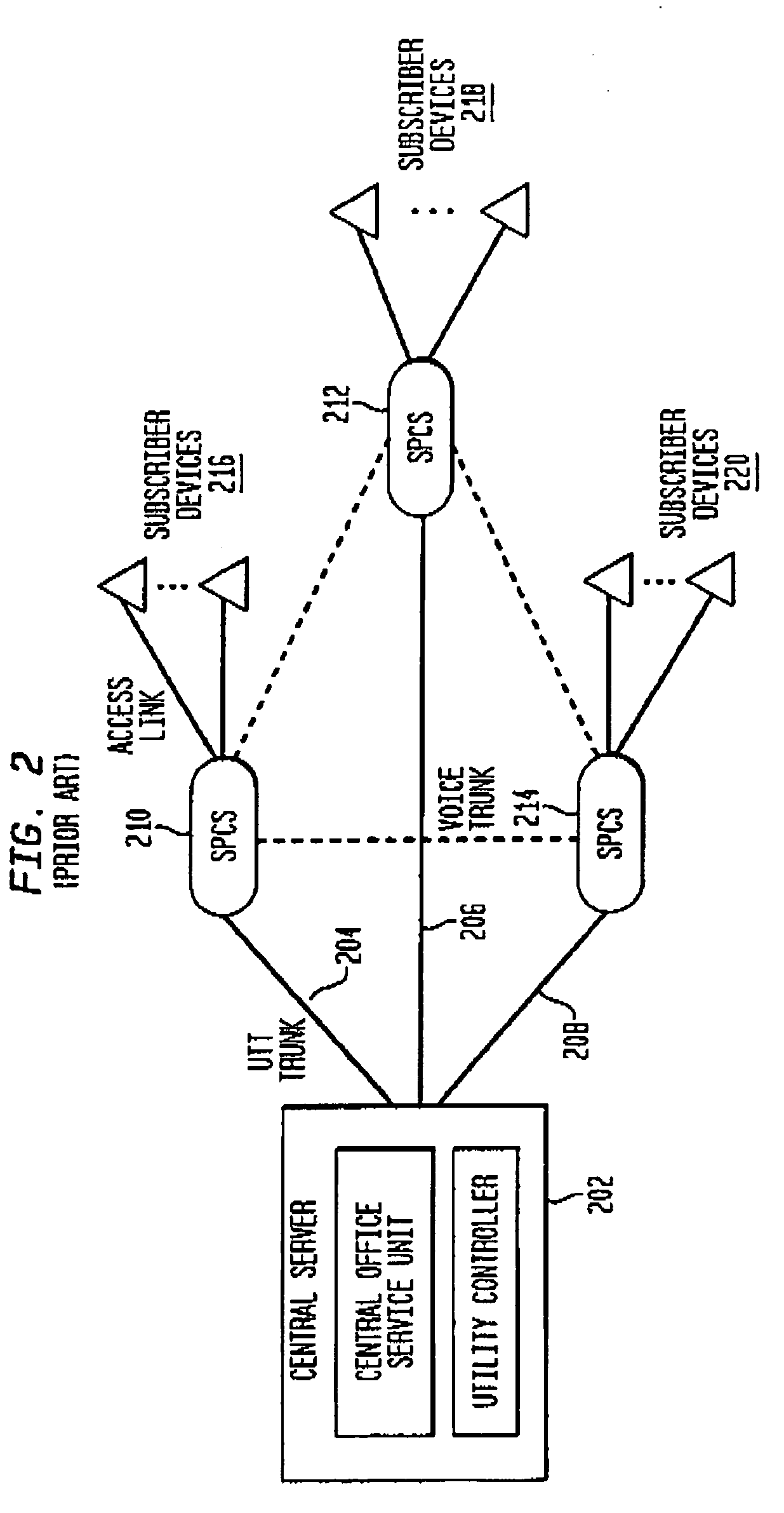However, in addition to the concerns mentioned above related to bandwidth limitations, call-establishment delays, and application deployment, these systems do not address issues related to
Local Number Portability (LNP) and do not provide a cost-effective and timely way to broadcast information to numerous subscribers.
As a result, these systems do not adequately address the emerging and changing needs of today's residential subscriber.
However, Garland's implementation posses several drawbacks with respect to the delivery of
data messages through the PSTN.
First, the
system is not a true network-based solution and therefore does not efficiently provide ubiquitous access to all subscribers.
Hence, the solution does not cost effectively scale to serve all CPE in a network.
If there is no UTT connection, the subscriber cannot be reached.
Third, the solution does not provide for efficient data transfer.
Voice connections are time-consuming to establish and are inherently slow for the transmission of data.
In addition, during broadcast scenarios, numerous voice connections can create switch congestion and therefore
call blocking.
Fourth, the solution does not provide a cost-effective broadcast solution, as would be needed, for example, by an emergency alerting application.
However, this solution is again hindered by the fact that large-scale broadcast requires the central server have a UTT
trunk to every switch.
Another issue is that due to the speed of the UTT
trunk, it is
time consuming to dynamically download new broadcast lists, a feature that is required for delivering
natural disaster information.
Advantageously, Garland'
s system has a mechanism for severing an overriding service application from the PSTN switching components, but this mechanism has limitations.
Hence, the transport services are inherently based on certain types of service applications and as a result, there is an inherent limitation as to the types of applications that can be implemented on this
system without the continuous definition of new transport services.
However, the
system still poses several drawbacks making it non-ideal for data message transport.
This connection is
time consuming to establish, especially when having to make numerous connections such as for broadcast applications.
Second, the system has LNP related issues for ported subscribers because the central server places the call to a switched-based application on the SPCS rather than directly to the subscriber.
To solve this LNP issue, the SPCS would need to maintain a local
database of ported numbers, which is costly.
Third, the application is inherently tied to the PSTN switching components and therefore lacks flexibility to support other applications.
Lastly, the system only supports subscriber broadcast by sending individual messages to each subscriber, which is inefficient.
However, this system has several drawbacks making it non-ideal for data message transport.
First, the solution is tailored towards a specific application (
voicemail notification) and is therefore not adaptable to applications requiring other forms of message transfer.
Specifically, the protocols defined for transporting data from the
voicemail system to the originating SPCS, between the originating and terminating SPCS's, and from the terminating SPCS to the CPE device are specific to the transport of
voicemail information and are not adaptable to the transport of any data (i.e., the
data content is limited in both size and type).
In addition, the system does not define a mechanism for the central server to instruct the terminating SPCS on how to establish the connection from the terminating SPCS to the CPE device.
Both issues prevent the system from supporting service applications other than voicemail without modification to the PSTN switching components.
Second, the solution does not support a broadcast mechanism from the central server to a plurality of subscribers.
The central server could broadcast a message, one-at-a-time to numerous subscribers, but this is time-consuming and could potentially create congestion within the CCS / SS7 network.
The Create-Call function poses several drawbacks making it non-ideal for data message transport.
First, the function does not support efficient broadcast from a central server since
call origination occurs from the CPE device to the central server.
Second, the function does not provide for efficient data transfer since all communications between a central server and CPE device require a switched voice connection.
Third, the function is limited with respect to the types of data that can be sent to a CPE device.
 Login to View More
Login to View More  Login to View More
Login to View More 


